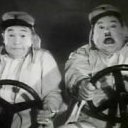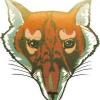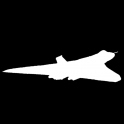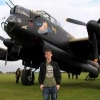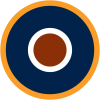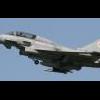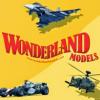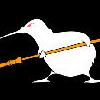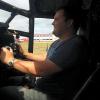Search the Community
Showing results for tags 'New Tool'.
-
Just spotted on Scalemates, Border 1/35 B-17G 2024. New Tool. There is only a black silhouette, but it is clearly a late B-17G. I have my fingers crossed. Cheers Jeff
- 11 replies
-
- 2
-

-
- B-17G Flying Fortress
- Border models
-
(and 1 more)
Tagged with:
-
Land Rover Series 1 Pickup Starter Set (A55012) 1:43 Airfix Following WWII, and possibly a little bit jealous of the Americans and their Jeeps, the British armed forces decided that they needed a British designed and built Jeep-alike of their own, although they approached the design from a different angle that led to long-lived series of vehicles that went by the name of Land Rover from 1948 to 1985, many of which are still in operation, and are supported by an ownership base that verges on religious in its devotion to the type. Built initially by Rover until they were merged into British Leyland, it developed from being based on a butchered Jeep chassis to a newly-designed welded box chassis that used an aluminium alloy for body panels as steel was in short supply at the time. It had the luxury of doors, and with a hardtop available to give it a more car-like experience, better suited to our British climate. Production began with the Series I, and evolved via the Series II to the Series III in long (LWB) and short (SWB) wheelbase versions, which had many cosmetic changes as well as those under the skin. Later improvements saw stiffening of the body, strengthening of the transmission that had been a weak-spot, and optional more comfortable trim levels that broadened its appeal, although the fuel consumption was always an eye-opener, even on those vehicles that had selectable two-wheel drive. For Landy fans afford to run their motors must now involve privations elsewhere, thanks to the cost of fuel. Well over a million were sold all over the world, and some variants were license-built overseas, although they still followed the original pattern closely, so bore a striking resemblance to their progenitor. The original intent for the Land Rover was military service, and even though farmers and civilians alike took to it as well, various Land Rover variants saw military service with the British armed services, as well as those in Australia, New Zealand and South Africa amongst others, including the Forward Control that looked more like a truck, but still kept many of the Land Rover’s other design cues. Although it has been out of production for many years, there is still much love for the Landy out there, and now that Land Rover’s new owners Tata have created a modern replacement, it’s not hard to imagine how much the purists will hate its looks, as well as the price. Having seen one on the road recently, I’m with the traditionalists. It’s a bland, up-market pig (IMHO). With the Electric version coming, that price is likely to soar to near or past £100k. The Kit This is another brand-new tooling in 1:43 from Airfix’s new range that seems to expand every month of late. The legendary Land Rover pickup arrives in a small end-opening box with a header-hanger for vertical display, and as it is a starter set, it also includes four thumb-pots of acrylic paint, a small tube of plastic cement, and a #2 paintbrush with its man-made bristles protected by a clear cylindrical shroud. The kit consists of two sprues in grey styrene, following the “no outer runners” maxim for this range, while the clear sprue has runners. The small decal sheet and instruction booklet printed in colour complete the package, and if you were wondering where the painting guide was, it’s on the back of the box. We’ve come to expect excellent detail from this range, and this kit is no different, having a ton of it moulded into every part that should result in a highly detailed kerbside model of this almost legendary utility vehicle. These starter sets also hold the modeller’s hand by including locations for glue in yellow, and providing a sprue diagram at each step that points out the location to the builder, which is a time-saver whether you’re a novice or not. Construction begins with the rear bulkhead of the cab, mounting the backs of the three seats that are moulded on a carrier plate, and inserting the rear window from inside, then taking that assembly and fitting it to the floor pan, gluing it to the step between the two sections, and joining it with a stepped cab floor that has the seat bases moulded-in. The distinctive grille and wing-fronts are moulded as one, and have the light lenses, which are moulded as a single part on a carrier, pressed into the holes from behind. This again caters for the novice modeller, saving them having to fiddle about putting two small parts into correspondingly small cut-outs, doesn’t affect detail one iota, giving you the option to apply the glue to the carrier to prevent fogging the lenses, which is always nice. The bonnet has the tops of the wings moulded-in, and both vertical inner panels are moulded into another carrier to help with alignment, but to the detailer, it would be tricky to excavate to install an engine. Does anyone do that at this scale? Probably. Some of our fellow modellers are really good at their hobby, and just a little bit nuts. The grille and wing fronts are then mated to the bonnet, and the firewall is correctly detailed with right-hand-drive steering wheel and one-piece windscreen that has a groove down the centre to locate the central frame of the screen. Two dial decals are applied to recesses in the binnacle, and a third decal is applied in the shallow centre console to add a little detail to the interior, then it is joined to the rear of the bonnet and installed on the front of the floor pan. The body sides are full length, including the sides of the load bed, the doors and the outer front wings, which are joined to the floor pan after inserting the side windows from within and painting the door cards, adding the roof and tailgate to complete the Land Rover look. The model is flipped onto its back to add more of the chassis, and paint those sections that are moulded into the floor, adding a cross-member under the bed, two chassis rail sections with moulded-in leaf-springs in the rear, and the leaf-springs at the front. The two axles, their differential housings and drive-shafts are each moulded as two parts, and these sit under the centres of the leaf-springs, mating to the moulded-in transfer box. Two more cross-members are fitted between the chassis rails, then the wheels are made up from two halves each, with different hubs for the front and rear pairs, plus another two-part wheel that mounts on the bonnet to finish the build. The last step shows the application of the Land Rover badge decals and the number plates, but those are replicated on the back of the box. Markings Only one example is shown on the back of the box, and it is painted in a primer-like grey, with dark blue/grey chassis and wheel hubs. From the box you can build this: Decals are by Cartograf, which is a guarantee of good registration, sharpness and colour density, with a thin gloss carrier film cut close to the printed areas. Conclusion One of our members has already bought and built one of these, so we know it builds up well, and with careful painting and decaling, it looks great. Highly recommended. Review sample courtesy of
-
Right O, I'd better get another marker down in the entropy arena, while I'm in the wreckage zone. 😋 I've got my Lockheed Hudson wreck pretty well sorted and just finishing a few figures and general items scattered around, so now I'm looking for another..... I've picked up a few of the Airfix bargain starter kits in Lidl/Aldi as they come around - the paint + brush + glue is a coupla quids worth for a start! - and I've found the little FW190 kit in my pile. I've no interest in making a "lovely Butcherbird", and I'm wondering if I can make a barn find or something similar out of it. It's another vague and sketchy notion, I know, but maybe that's the way these projects start out.... Nothing really to show just yet other than I've drilled holes in the instrument panels, maybe for Wires to be hanging out of, like some of the instruments or dials have been robbed out. I expect the guns will be missing too and I'll see what else can be wrecked or entropised. It's a nice looking kit, and these new Airfix toolings are generally very good but also with zero tolerances with regards to fit and assembly . So let's see how they can cope with a bit of creative messing ❗😄
-
Having been busy rehearsing then performing in a play with my local theatre group, and a couple of holidays in the Cotswolds and London, I’ve finally got some time now to get back to the modelling bench. Obviously this is a familiar kit by now, but it’s my first attempt to build the new tool Airfix Vulcan. I love the classic white scheme, and sorely tempted to do that, but I built my old Vulcan as a white one and really like the other option in the kit too, so I’ll be building her in this early camo scheme with white undersides. I’ll be building pretty much oob, except no Blue Steel, as I hate nuclear weapons. Also, I always like to see squadron markings, and after some research it seems that Vulcans in this scheme did start to display individual unit markings in the early 70s, before the two-tone roundels. These are my references for this build. If I can find a photo of XM594 in this scheme with unit badge I’ll stick with that one, otherwise I’ve a few alternatives: I guess I’ll need to decide which airframe fairly soon as it’ll determine which jetpipes I use. Any advice and info greatly appreciated throughout the build!
-
Dear all, this is the final post of my build of the new Airfix 1:72 Beaufighter TF-X. I built the torpedo bomber version which is one of the two proposed by the kit. The paint scheme is for a torpedo bomber of the No. 404 Squadron, Royal Canadian Air Force. The upper surfaces are painted Extra Dark Sea Grey (Mr. Color 333). The lower surfaces are painted Sky (Tamiya XF-21 + XF-2): The finished model is not very large, but it is quite nicely done: I found that the kit was a pleasure to build and only a couple of points need some special care (engine cowlings and landing gear assemblies). I replaced the kit wheels, the exhaust tubes and the barrel of the dorsal gun. I also used the Eduard's masks for the transparent parts. I hope you like my final pictures. Best regards, Dan
-
Starting tomorrow lads! I have to go to work (curses!) but sprue shots to follow. Never been this excited about a kit since the old days. Possibly the first time in my adult modeller's life I've dropped everything else to start a new arrival. Since there is no dedicated aftermarket for this kit (yet), I'll only be replacing the seats (Pavla) and adding decals (Warbird) and a pitot tube (Master). I'm building Article #974 as the Gooney Bird, following its enforced grounding on Midway Island in 1969. This airframe had one of the most colourful histories of all the Blackbirds and was generally regarded by all crew as a 'good ship'. Although not recognised as one of the speed record breakers, it flew the first operational sorties from Kadena AFB over Vietnam in 1968, and recorded the most operational sorties from this Det. Sadly, it was also the last SR-71 to be lost, crashing into the sea off Okinawa in 1989 following a catastrophic engine failure after takeoff. Both crew ejected safely. It carried the colourful tail art of a habu viper coiled around a number '1' and the nickname 'Ichi Ban' (Number One). On the very brief occasion of being stuck on Midway Island following a generator failure, it also received artwork of the famed 'Gooney Birds' (albatross) which inhabited the island. The paint used by the artist (a local naval officer's wife) unfortunately wasn't milspec Mach 3 resistant, and didn't survive for long! So - the plastic looks excellent, possibly Revell's finest effort to date as regards mould quality and presentation. Detail is fine and the decals are superb, especially the cockpit detail decals. Let's see how it goes together! Alan
-
First, my apologies for the dilatory approach to posting for this build .... as in, none .... so far. I suppose I am a rather existentially challenged group builder! But, I have indeed been keeping up, watching builds in progress and, most importantly, I have been building along. Super job on your builds everyone; thanks for taking the time to post them! Admittedly I started this build before the beginning date, but it was less than a quarter way there by the start date, I submit, and besides that, I am just getting my act together for a post two-thirds of the way through the group build. This should - in theory - curve the space-time continuum just enough to make the timing of all this copacetic enough for publication at this time. I'll start posting now. Be warned, if you were to happen to follow the flickr links on my photos you may also be inexplicably propelled into the future. So here are the build pictures even if not in real-time, nor exactly on-time! The inspiration for this build: ; ; I thought it would be fitting to do my first build of the new Airfix kit as the first production Mk.2 Buccaneer - XN974. The first of the few as it were, although I think it will be the first of several builds of this kit for me I suspect. I am going to build this one wheels up as in the picture, beating up the aerodrome at Brough in May 1966. Of course, it will take pilots too, and I took the opportunity to upgrade the crew with figures from PJ Productions. And some references to help me along the way: As with most airplane model kits, things begin with the cockpit. I built it up first and then painted it and added the kit decals. That will be plenty good for an in-flight model with figures in the seats. It is a cleverly engineered kit. It doesn't take long to get to this point because it is fun to see how it goes together. Building the landing gear bays closed was easy enough. Just cut the locating tabs and lay the in place. Then the sanding began which is where things slowed down a bit. I'll post more tomorrow night. Sorry for the untimely post and lousy iphone pics. - Jack
-
All done. A very enjoyable kit but there are some delicate details that need careful handling. I used Xtradecal sheet X72307 for the aircraft serials and unit markings and stencils from the Airfix kit. The seat belts were pinched from an Eduard set for the old tool Buccaneer but the other details for the IP etc didn’t fit. Paints are from Mig Ammo - 205, 206 & 207 as included in their A.mig 7203 set; I found these to be very fragile and easily damaged even with a couple of dots of Pledge floor gloss. The only weathering was a panel wash. In the end I decided not use the Air Graphics CBLS panniers or the kit rocket pods and painted the bombs from the kit as inert/practice bombs, I made some more from the Airfix Phantom kit but had trouble with paint adhesion on them and couldn’t be bothered to re-do them, I also found them to be a slightly different shape.
- 28 replies
-
- 50
-

-
Well here I am again with a shiny new Vulcan kit on the desk. Well, actually, two of them... And a third yet to be delivered (smaller 1/200 kit that one). These will be my sixth, seventh and eighth Vulcan models (just imagine the 1/200 kit is there as well). First of all, the box art is beautiful! While it won't make suitable reference material, it's lovely. 9/10 for that (lost 1 because they put a TFR blister on 558) What's in the box: So, I suppose since this is a fairly new kit, sprue shots are in order. I'll try to point out all inaccuracies and flaws in the kit, but bear in mind I'm being pretty harsh here. It looks like a good kit and on first impressions, better than the GWH kit in the same scale. Although my pictures don't show it, they appear to have the same incorrect radome panel lines as the old tool Airfix kit, when this is painted black as it was on many earlier examples (especially white ones) the incorrect line will have a significant impact on how the Vulcan looks in my opinion. I will be correcting this if I do such a scheme. The conventional bomb bay here is pretty much wrong, to me it appears to bulge out far too much and is missing the seam that should be down the middle where it opens.... If someone ever makes an aftermarket etch or resin open bomb bay, I'd love one! Oddly the Blue Steel Missile is missing its lower fin. Quite an annoying omission in the kit as the conventional bomb bay looks wrong to me And here's the decals, markings for two aircraft are provided. They'll do for the casual modeller with a passing interest in the Avro Vulcan but I'll be using aftermarket ones or perhaps the GWH K2 ones if I decide to turn one of these into a K2. Painting guides are provided, but should be taken with a pinch of salt. Check references. XL361 is the first scheme, to make an accurate representation of this airframe, you'll need to remove the TFR blister on the nose and only add the right side ECM plate. Scheme B is XH558 in the VTTST scheme, again take this with a pinch of salt. Remove the TFR blister and only add the right side ECM plate for that scheme, but also the ECM heat exchanger (box thing in the side of the tailcone) needs to be removed.
- 39 replies
-
- 6
-

-

-
- New Tool
- Avro Vulcan
-
(and 1 more)
Tagged with:
-
Hi all, I've finally got around to starting my 1/72 Lancaster B.VII, to be finished as NX611. I've used the Eduard B.III (S) interior set for this kit, which, although not entirely authentic for a B.VII, has all of the important bits. The biggest visual discrepancy using the Eduard set is that of the starboard handrail, which is simply a less complex design than that in '611. The aircraft will be built in the condition as shown in my illustration. The fuselage has not been 'buttoned up' yet, in case anyone notices any glaring irregularities before I close her up. The B.III (S) mid-upper blanking plate is being fitted and the new mid-upper turret opening will be cut once the fuselage is closed. The aircraft will be brush painted, as with my B.III (S) ED825/G. The landing gear will be down, but I am yet to decide if the bomb bay doors will be open or closed. The interior has been an interesting first proper foray into building etched details.
-
MiniArt have a announced a new tool B-Type Omnibus, so we've finally got a replacement for the old Airfix kit Glad it's MiniArt who've done it, rather than Roden or ICM Andy
-
I'm not able to post reviews but the first part of this wip will be a review so if any moderators would like to move it to the review section then please feel free! For anyone who has built the excellent recent MkV, this boxing is very similar with many shared parts but also a few key differences. And for anyone who has built the rather disappointing Airfix Mki/ia/iia kit of a couple of years ago this is miles ahead in terms of detail and finesse. One of the very interesting things about this boxing is that it contains many items that allow you to build a pre-war spit and far more satisfyingly than the previous release. As you can see from this page of the instructions, there is a whole separate lower starboard sidewall and undercarriage lever for the pre-war option (option 'C' in the instructions). This could also allow for quite a nice and easy build of a prototype without too much additional work. You can see these parts below: And alongside the undercarriage lever is the early style pitot which is a very welcome addition: Another very visible difference with the pre-war Spitfire is the lack of headrest and seat armour which is also addressed in the instructions:
-
Hi all Here is my first finished new tool 1/72 Airfix Buccaneer S.2. I've built it as XN974 as she is today at the Yorkshire Air Museum. its built straight out of the box with a couple of scratch built aerials, and decals came from a Kits World sheet. It built up fine with no real issues, I had to use a couple of spots of filler in a couple of areas but that's more down to my ham fisted modelling skills than the kit itself. Been an engineer at YAM I did have access to real thing as modelling inspiration, and although its not a spot on representation of the real thing its close enough for me. I am going to change the serial number which is way too big on the kits world sheet and I'm going to add intake blanks and RBF flags at some point in the future. Enough waffle here's the pics Untitled by Scott Clayton, on Flickr Untitled by Scott Clayton, Untitled by Scott Clayton, on Fli Untitled by Scott Clayton, on Flickr Untitled by Scott Clayton, on Flickr Untitled by Scott Clayton, on Flickr Untitled by Scott Clayton, on Flickr And lastly yours truly with the model and the real XN974 Untitled by Scott Clayton, on Flickr Hope you all enjoyed ScottC
- 11 replies
-
- 54
-

-
T-34/85 Zavod 183 Mod.44 (6545) 1:35 Italeri The T-34 gave the German invaders something of a shock when they first encountered it during operation Barbarossa, their attempt at conquering the Soviet Union, and they were instrumental in reversing the tide through both their impressive performance and weight of numbers, due to their simple construction and the overwhelming industrial capability of the Russians. Even when the Germans were knocking on the gates of Moscow and Stalingrad, production was shifted lock-stock-and-barrel further east with barely a flicker, and in Stalingrad there are stories of fresh tanks rolling off the production lines and almost straight into combat. The simple design used tried and tested technology, together with innovative sloped armour that increased its effective thickness when hit in the horizontal plane. It was initially fitted with a powerful 76mm gun, but when this proved less able to penetrate the frontal armour of the Tiger, it was upgraded in 1943 with a bigger ZiS 85mm gun, which was equipped with a larger three-man turret that reduced the combat load on the crew, enabling the commander to concentrate more on the task in hand. It's diesel power plant gave it a good speed over most terrains, and as production ramped up there were over 1,000 produced each month, plenty to replace losses and more besides. The 1944 mod introduced a simplified new gun, improved crew layout, better sight and the radio moved into the turret to take advantage of increased space. The Kit This is a complete new tooling from Italeri, and shouldn't be confused with older toolings and collaborations, as it's a different animal. It arrives in a standard box with a fetching painting of the subject matter ploughing past ruined German armour, and inside are four sprues in dark green styrene, one in grey styrene, two lengths of insulated cable, a sheet of Photo-Etch (PE) brass, two rubbery tracks, decals sheet and the instruction booklet. The tooling is well-detailed, and as well as the rubber tracks there is also a full set of link-and-length styrene tracks, which should please almost everyone. What will also please many is the inclusion of a complete interior, even down to the engine compartment, the parts for which are on the grey sprue, so may have been a later addition. Construction begins with the lower hull, which has slots for the suspension, and circular holes for the drive sprockets, which are glued together from two halves, and fitted to a cone-shaped moulding with a cap inside to allow you to leave the idler movable. The suspension units are added to the inside of the hull with springs in diagonal housings, comprising two sections on each side, leaving enough room for the engine, which is next. You don't get a full engine, but the detail is plenty for the installation. The firewall has the engine top slotted into the back, and the aft of the engine with big fan is attached to the aft end of the top panel. The exhausts and large fan are glued in place, and the assembly is dropped into the hull, locating on tabs in the floor. The final drive housing is built up and dropped in behind the engine, and a set of ammo boxes double as a turret floor in the centre of the hull, with the driver's controls fitted at the front with some rather arm-chair style seats for driver and bow gunner. A scrap diagrams shows the correct position for the tools, controls and air bottles, after which the suspension and wheel set are glued in place, with nice detail on the wheels and their treaded rubber wheels, which are moulded-in. They fit onto swing-arms with stub axles in pairs that fix into two holes each in the sides of the hull to ensure the correct angle. The idler wheels are also added at this stage with their axle, two-part sprocket and hub cap holding it in place, and allowing it to rotate too if you're sparing with the glue. The final drive cover fits from underneath, with a note telling you to install parts 38A after adding the towing cable later, and then you can choose which style of tracks you'll be using. The rubber-band tracks are the simple option, and are moulded in a gun metal plastic that can be glued using super glue (CA). You can even forego painting them if you hate that sort of thing. The more complex option is to use the included link and length tracks, which have more detail, and will leave you with the correct faceted appearance where the tracks wrap around the ends of the runs. The top sections are each moulded as one piece, the bottom sections in two parts, while the curved sections are individual links, which are each made from two plates. More care will be needed for this option, but the results will be improved, and even more so with careful painting and weathering. The upper hull needs 11 small holes drilling out before you begin its assembly, mainly for the later mounting of fuel tanks, so get those out of the way before things get busy, or you might regret it. The louvers for the engine deck are inserted from the inside, and the hull is then turned over and detailed from the topside, with a central engine hatch and a big radiator box on top of the aft louvers, which has a two layer PE grille glued over its aperture after gently bending it to fit the curve of the box. Another two boxes with louvered parts are added to the sides of the engine deck, and a little tool box gets added to the starboard fender at the rear, then spare track links are assembled and lashed down with PE straps, with an additional length pinned across the glacis plate. The glacis plate also has the ball machine gun mounted and the large driver's hatch, which can be fitted open or closed and must have been a bullet-magnet when open. This is then fitted to the hull over the inner front panel, the turret insert is added, and three fuel drums are fixed to the hull sides along with some pioneer tools, more stowage, lights and shackles glued in place, with an overhead diagram showing their correct location. The two hull halves are married up, the front fenders added, and yet more barrels, this time smoke dischargers are added to the rear bulkhead skin, which is a separate part. The armoured exhausts are assembled and fitted to the apertures on the skin, and a central access hatch can be modelled open or closed. The whole rear bulkhead can be posed open on its hinge-points, and a PE lip is included on the brass sheet to give this a more realistic look. The exhaust pipe tips sleeve onto the main exhaust during the closing process, although the break-point looks slightly different from the pictures I have seen, so if you want to add a little more realism, drill out the ends of the pieces and add a collar near the end of the fixed part of the exhaust that comes out of the mufflers. The tip that is visible outside the tank already has a hollow end, which is nice. As yet the tank is turret-free, so the next steps rectify this with a full breech, ready rack holding 12 rounds, sighting equipment with gunner's stool attached, and the relocated radio gear, as well as a couple of periscopes in the roof. The commander's hatch has a periscope built into the front half, and can be posed open by gluing them into the ring in an appropriate position, then mating them with the cupola ring. This and the gunner's hatch are fitted to the top of the turret along with a couple of mushroom vents, various tie-downs and rails, while the mantlet with cover, two part styrene gun barrel and cheek armour are added during the mating of the top and bottom sections. These cast turrets weren't put together with extreme care, and the joints are sometimes horribly rough, so check your references and decide what they look like in the flesh. The turret has a nice sand-cast texture moulded-in, as does the mantlet, rear bulkhead and final drive panel. The barrel is split horizontally, so there's a seam to fix there, and once that's in place, the turret fits to the hull, locking with a bayonet fitting. The last job is to create the towing cables from the two insulated wires that are included in the box. You cut them to length, twist the strands as you slide off the insulation, then glue the styrene towing eyes to each end, draping them over the fenders and attaching them on the shackles as indicated. Markings There are four decal options from the box, all of which are painted Russian/Soviet Green, and one is over-painted with white winter distemper camouflage. Each tank has unit markings, as well as some additional markings and emblems. From the box you can build one of the following: 9th Guards Tank Corp, 2nd Guards Tank Army – Berlin, Apr 1945 64th Guards Tank Brigade, 1st Guards Tank Army – Pomerania, Feb 1945 44th Guards Tank Brigade – Yugoslavia, Spring 1945 2nd Motorcycle Tank Battalion, 1st Tank Corp, 2nd Polish Army – Jul 1945 The decals are printed by Zanchetti in Italy for Italeri, and have good sharpness and colour density. They are all either black or white, so there's no issues with registration either, as there isn't any! Colours are called out in Italeri acrylic paint codes, as well as FS numbers, which should be a help if you use another brand. Conclusion It's nice to see Italeri moving with the times, including PE and metal towing cables with their kits, and options to please modellers with different needs, such as the two track options here, and with this being a popular subject it should sell well, particularly with their wide distribution network. Highly recommended. Review sample courtesy of
-
Tempest Mk.V ProfiPACK (82121) 1:48 Eduard The Tempest was a development of the Typhoon, and might account for my endless ability to get their names confused. Originally called the Typhoon II, it was envisioned to solve any and all of the issues that bothered its designer Sidney Camm. The main difference was a much thinner wing which reduced drag and improved aerodynamics of the laminar airflow. The wings could accommodate 20mm Hispano cannons that packed an enormous punch, and lent itself to the low-level attack role that it was designed for. The engines intended to power the aircraft were the Centaurus, Griffon and Sabre IV, and initially the Rollf-Royce Vulture, which was terminated early in the design phase, leaving the three options going forward and necessitating substantially different cowlings to accommodate their differing shapes. The Mark V was split into two series, with the Series 1 having the Sabre II that had a similar chin intake to the Typhoon and many Typhoon parts, while the later Series 2 used fewer Typhoon parts and had their cannon barrels shortened so they fitted flush with the leading edge on the Series 2s. A few of the early Mk.Vs were used as test beds, while other marks were developed alongside it, such as the Mk.IIs with Centaurus engines and a cylindrical cowl; Mk.VIs which had a very short production run; the Mk.III and Mk.IV that used a two types of Griffon engine and didn't see service, and later the TT.Mk.5, which is where a lot of Mk.Vs ended their days towing targets in garish colour schemes. The Kit This is a complete 100% new tool, and shouldn't be confused with their older Tempest V that's been around for ages, and has some known issues with its tail. It arrives in the standard ProfiPACK box, with a brand new painting on the front showing the Tempest upsetting a V1 "Doodlebug" flying bomb, which was one of their tasks due to their speed and ruggedness, with stories of tipping them with a wingtip, and blowing them up from way too close with cannon fire. Either way it's extreme bravery on the part of the pilots that helped to reduce the toll on London from these new "vengeance" weapons late in the war. Following on the heels of their recent Spitfire, 109 and 190 toolings, the Tempest is packed with surface detail that is at the leading edge of moulding technology and skill. The rear of the fuselage is festooned with raised rivets that are correct for this series, and there are differing width panel lines, a number of types of fastener, with the detail extended across the whole airframe. The interior is similarly well detailed with pre-painted PE instrument panel and seatbelts amongst other parts, which you can upgrade further by purchasing the Brassin set that's available separately. Inside the box are five sprues of dark grey styrene, a circular sprue of clear parts, a sheet of pre-painted and nickel-plated Photo-Etch (PE), a set of canopy masks in yellow kabuki tape (not pictured), and the instructions with the profiles printed in colour in the rear of the booklet. Construction begins in the cockpit, which has a solid floor and framework sides, exposing the interior of the fuselage behind, which has been detailed by the designers inside the fuselage halves, showing great attention to detail. The seat, control column and rudder pedals are fitted to the solid areas, while the instrument panel and side consoles are suspended from the framework sides, which fit between the front and rear bulkheads, the latter being armoured and supporting the seat with a small framework of parts. The pre-painted belts are attached to the seat before installation, and more PE is used in the side consoles, resulting in a very neat and well-detailed cockpit. Before the fuselage can be closed around it, the interior area needs to be painted black (I prefer dark grey with a black wash), the simple tail-wheel bay needs constructing, and the complex radiator intake is built up from a substantial number of parts, which are shown with the correct order noted for your ease. You may want to pre-prepare some of the sub-assemblies in case there are any seams to fill in the intake trunking here. The final parts for the cockpit interior are fitted to the fuselage sides at this point, so that they show through the framework once it is installed. The lower wing is a single full-span part, and as you would expect the upper wings are separate parts that have the landing gear bay roof detail moulded in. The sides of the bays are added along with some detail parts in both bays, at which point the wings can be closed up and the whole assembly joined with the fuselage, and once the tail feathers with their separate rudder and elevators are fitted, that's the airframe ostensibly complete. The cockpit aperture is over-large, which allows an insert to be dropped in after it is fitted out with detail parts specific to this variant, the elevators and cannon barrel inserts are added to the wings, and it's then time to build and fit the landing gear. The tail wheel has a two part strut with Y-shaped yoke and separate two-part wheel that has an anti-shimmy groove moulded in, and two bay doors plus actuator for when the leg is retracted in flight. The main gear wheels have a large two-part balloon tyre with the Dunlop brand in raised letters on the side, and separate hubs for both sides to obtain the most detail. There is no tread, so hiding the seam on the tyre's contact patch will be easy, and if you like your wheels weighted, just sand a flat spot at the bottom. The gear legs are a single part each, and have a complex single-part retraction jack that extends inboard into the bay, with large captive bay covers on the leg, and smaller inner doors that fold toward each other on the centreline. A drop-down stirrup is fixed to the underside of the fuselage for the pilot, a pitot probe added to the wing, and a bunch of PE fish-plates are added to the transport joint at the rear of the fuselage, which were to correct a structural weakness in these early airframes that utilised some of the Typhoon parts. On the topside the two-part canopy is attached, with the opener having a styrene insert for added detail that latches into the track, with a whip-antenna just behind its furthest point when open. The four-bladed prop is a single part that is attached to the back-plate and spinner cap, then glued to the front of the fuselage along with a pair of exhaust stubs, which don't have hollow tips. There is a resin set that adds more detail and includes hollow tips that we'll be reviewing later, once we've finished drooling over this. The canopy masks also include a pair of dots for the tail wheel, and tread-plate masks for the root of each wing that will be useful to cover up an initial squirt of black before you begin painting the main colours. There aren't any weapons shown in the instructions, but they are available on the sprues in the shape of eight unguided rockets with moulded-in rails of the simplified and more traditional early types, plus eight separate tail fins, enough for one set of rockets. Markings There are six decal options included with this ProfiPACK edition, and due to this aircraft's service and duties, half of them are shown in D-Day markings, with the familiar black and white invasion stripes that stopped them getting shot at by their own people. The sheet is combined with a set of stencils that are also being sold separately for those with the Overtrees that can't get enough of their Tempests. Decals are by Cartograf, which is a guarantee of good registration, sharpness and colour density, with a thin gloss carrier film cut close to the printed areas. From the box you can build one of the following: JN766, No. 486 (RNZAF) Squadron, RAF Station Castle Camp, Great Britain, April 1944 JN751, Wg Cdr Ronald P. Beamont, DSO, DFC & bar, CO of No. 150 Wing, RAF Station Bradwell Bay, Great Britain, April 1944 JN755, No. 3 Squadron, Newchurch, Great Britain, May 1944 JN751, Wg Cdr Ronald P. Beamont DSO, DFC & bar, CO of No. 150 Wing, Newchurch, Great Britain, June 1944 JN763, No. 486 (RNZAF) Squadron, Newchurch, Great Britain, June 1944 JN765, No. 3 Squadron, Newchurch, Great Britain, June 1944 Conclusion If this builds as well as the 109 or Spitfires from Eduard (and I suspect it will), it will be awesome. The kit is just packed with detail, and if you still want more, there are a whole host of PE and Resin sets that we'll be looking at in the near future. What an end to the year for Eduard! Eduard have shut down for the Christmas period at time of writing, and will be back on the 7th of January 2019. Overtrees (82121X & 82121-LEPT) If you have one of these new kits but wanted to do another decal option in addition, or have an aftermarket decal sheet in mind, you'll be pleased to know that you can get just the sprues from the Eduard site, and if you want to add some detail, you can also get a set of Photo-Etch to go with it. They arrive in a white box with a sticker on the end, with all the styrene in the one bag, and the clear parts bagged inside that for their safety during transport and storage. The Overtrees as they're called can only be bought directly from Eduard, so click on the button below to pick up yours. You can also download the instruction booklet if you don't already have one from the main kit page. Overtrees Kit Overtrees PE Review sample courtesy of
-
Hej! Britmodellers, having finished my up to now stölth Hammer of Thor for Modellfan 10 2018. So for all Roumormongers: Specialhobby had already a Article Nr. for the JA at the Nuremberg Fair, but they decided then to go again with Tarangus. This is my early testshot handed to me in Prague before that decision. I was free to choose the version, because no decals were ready too at that time. The shot was very, very good, i only polished the prototype canopy and you all fans will have a lot of fun with this, because there is not a lot to complain even for special Specialists on the Viggen Cheers, Tom
-
Here's my build from the 'P-51D dedicated GB', build thread over there, but not much to say or see really. Only my second new tool Airfix I've done and it is a cracking little kit, perfect Mojo restorer if needed! Only problem was the un-usable Aerial mast, which I did a couple of attempts at scratching it, turned a little too short and is leaning rearwards for some reason, but I'm just gonna leave it. Used the markings from the Xtradecal sheet X72228, for a 3 Sqn RAAF machine, KH716 CV-P based in Italy 1945. Paint was AK Interactive 'Extreme Metal' Aluminium, airbrushed with no issues straight from the bottle. Rest was done with Vallejo and Humbrol Acrylics. A bit of Vallejo Satin Varnish was used to dull the gloss of the decals down a bit and randomly brushed on over the airframe to try to vary the finish. A light weathering was dry-brushed on, the 'chipping/faded' effect on the anti-dazzle panel was to hide my mistake fuselage join!
- 10 replies
-
- 25
-

-

-
Hi all, Our IPMS group was invited to show our models at the local RAFA's RAF100 event. With a week to go I realised I needed more than Spitfires and one Sunderland. With a week to go, I grabbed this starter set JP from the stash, mainly on the grounds that a single colour would be quicker...obviously red not a brilliant choice. I also built a Frog Meteor during the week, as well as completing the Spitfire Vb in the Classic Airfix GB. Built in flight for ease, hence the small 1/16" square hole in the underside for the stand. The RAFA and their guests were impressed and complimentary about our models, although various people kept pointing out rather obvious gaps in our selection...we also got to speak to two WW2 pilots, one whose time was spent flying rhubarbs and circuses in Spitfires, whilst the other had chosen Thunderbolts over Spitfires in Burma. He said that when he was given that choice, he fancied something bigger and tougher around him! Cheers Will
-
We have just received conformation that the new tool Hasegawa 1/72 F-35B is on it way to us! Stock is limited however so don't miss out! Hasegawa 1/72 F-35b
-
Here's my third completion for 2018, Hasegawa's new tool H8K1 Emily: I bought the H8K2 when it was released last year; when they released the H8K1 some months later I had to get this one as well - to be honest if I'd had the choice at the outset I would only have bought the H8K1 as I prefer 'clean' aircraft unemcumbered by the radar array that, for me, spoil the look of the later versions of the Emily. It's the same kit with a couple of different sprues including a new nose section and with the majority of the cannon armament of the H8K2 replaced by what appear to be VGO machine guns. The kit transfers were used to represent an aircraft of the 802nd Flying Group based at Rabaul in 1942 - these aircraft were initially used alongside the older Kawanishi H6K Mavis flying boats and undertook some seriously long-range penetrations including attempts to launch bombing raids on Pearl Harbour and Northern Australia. As with the H8K2 kit I built earlier this year the undersides were finished in Alclad Semi-matt Aluminum with the doped fabric parts represented using Citadel Runefang Steel; the uppersurfaces using Colourcoats ACJ01 IJN D1 Deep Green Black, with the doped fabric surfaces painted using the same colour mixed with a little ACJ18 IJN Interior Olive Green. One thing I did differently this time was to spray the leading-edge ID markings in Colourcoats ACJ19 ID Yellow rather than use the kit transfers, as I had a little trouble getting them to conform last time. The floats were rigged using Infini Lycra thread which was also used for the r/t antenna wire. Finally, here's a couple of pictures of her with her younger sister: Cheers, Stew
- 11 replies
-
- 30
-

-
This is my brand new, new tool Emily. It was pure fun except the small windows. Featured in ModellFan 2017/08. The Modelkasten designed crew is a hit, when you individualise them!
-
From the modelling news http://www.themodellingnews.com/2018/02/preview-of-italeris-catalogue-new-items.html Could it be we'll get it in 2018?
-
I have started my next build, the new tool C-47 from Airfix. I have a self-imposed deadline of 10 Nov so this will be a quick one I hope. Decals are from the DK sheet from my last C-47 build and a simple SWPTO colour scheme of over Olive Drab over grey. The build has progressed rapidly over the last couple of days and I hope to share some pictures soon. Box shot as per last entry...
-
Hi Guys & Gals...I present to you, my lastest completion. The New Tool Sea King. It took me 3 attempts to get the camo half decent, the 3rd of which was achieved by 8 hours of masking.
- 38 replies
-
- 56
-

-
Well, some nice things are coming from Tamiya land this September/October: 1/35 Archer Self Propelled AT Gun - 35356 (New Tool) 1/24 Mercedes-Benz AMG GT3 - 24345 (New Tool) 1/12 Yamaha RZ250 - 14002 (Re-release) 1/12 Yamaha RZ350 - 14004 (Re-release) I would have put the 1/32 F4U-1D Corsair in there but it's out in the UK market already. I must say, the 1/12 Yamaha RD's, are a nice sight to see and I believe they include Cartograf printed decals too. UK RRP is set to be around the £24.99 mark as with the current re-releases. The AMG GT3 is a real surprise in some ways, I thought they would have done the road car to go with the lovely 300SL 'Gull Wing' but still, it's most welcome. Oh yeah, where on earth is that 1/48 F-16D...?




